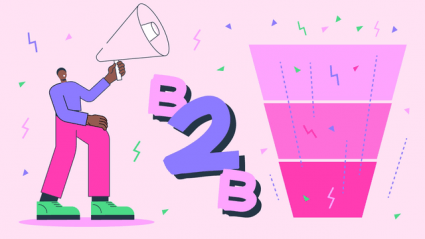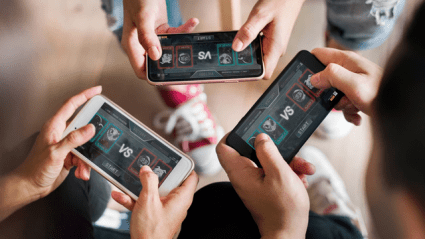Not every brand can spend $6.5 million dollars on Super Bowl ad space. But whether your brand is a big-spending Budweiser or looking to use your dollars in other ways, you should be ready to take advantage of the massive audience and digital conversations showing up when the Los Angeles Rams and the Cincinnati Bengals kick off in Super Bowl 2022.
We’re used to thinking of the Super Bowl as a TV moment, but that’s not the way consumers engage anymore. Few people are watching the big game without a phone in hand, second screening for dear life. In fact, 88% of viewers use a second device while watching TV, according to data from Nielsen. And that means there is a huge opportunity to drive awareness, engage with customers, and even convert that captive audience, whether or not your brand is showing up on the big screen.
Remember: TV and digital don’t happen in a vacuum. You need to be considering the entire customer experience to get the most business value out of the ultimate 1:many moments.
Whether you’re airing an ad or looking to grab attention on digital, here are some specific recommendations about how your brand can win on Super Bowl Sunday.
Huddle up: start by setting the right brand goals
The biggest plays at the Super Bowl aren’t on the field, they’re by brands trying to make their mark on the larger consumer consciousness. Make sure you have a clear understanding of your goals for your Super Bowl marketing campaigns and how they align with your business priorities.
Before setting foot on the field, set your intention. Your game plan might include core branding goals like:
- Capture the attention of consumers so that brand is top of mind
- Educate the consumer as to what brand does, emphasize differentiators
- Establish a clear positive sentiment around brand or product
Remember: to be a champion, you can’t try to do everything. Focus on a specific goal and build your strategy around that objective. Every part of your strategy should be working together across channels as one team to achieve that goal.
Then figure out how you’re tracking your results against those goals. Consider what KPIs best measure your performance and are objective, relevant, and as close to real-time as possible. If you’re used to only dealing in direct response campaigns, that might look a little different than what you’re used to.
Some performance branding KPIs you should consider:
- Social Mention Trends vs. Competitors
- App Downloads & Engagement Rates
- Video View & Completion Rates
- Social Shares
- Brand Search Trends vs. Competitors
- Product Search Volume Trends vs. Competitors
- Clickthrough Rates on Digital Ads
- Engagement Rates on Social Media
Now that you’ve set up your game plan, it’s time to play. Let’s take a look at some guidelines for a great Super Bowl marketing strategy.
Set the playbook: your brand messaging and creative should speak to the current moment
Last year, Super Bowl ads were decidedly heavy, focusing on social causes and pandemic safety. Even more product-focused ads were generally showcasing features built for consumers who were stuck at home like food delivery and the expansion of 5G.
We’re in a different space now; the ads that have already been released indicate that consumers are ready to lighten up and focus more on establishing a sense of normalcy and safety. Consider leaning into themes of hope, humor, and community as you put together your campaigns.
The Super Bowl is an opportunity to get in front of new audiences and expand the upper funnel for your brand. This is your chance to introduce your brand and prime these audiences to take a closer look, but it’s also extremely competitive.
Don’t run with a generic message about your products or services that you’ve used in the past year. Now is the time to get specific and put extra thought into your creative if you want to stand out and earn the attention of millions of consumers.
Get on the field: Go where the conversations are happening
Twitter may not be your brand’s go-to social network for performance marketing, but it undeniably takes center stage during a real-time event like the Super Bowl. That’s where immediate conversations, controversies, reactions, and more will be happening.
Whether or not you usually spend on Twitter, you should consider incorporating it into your game day strategy. Think about it as the perfect pass: TV gets the ball in the air, and Twitter is the end zone:
- Total minutes on Twitter increased by 22%, compared to a 9% decrease on Facebook, Instagram, and Snapchat.
- During the 2021 NFL playoffs and Super Bowl, Twitter was the #1 platform for video with 315.4 million views compared to 199.5 million for YouTube and 196.3 million for Facebook.
- 65% of NFL fans on Twitter are under 35
So will your brand be there to complete the pass or get intercepted by the competition? The choice is yours, and this is the perfect time to try something new and test a Twitter strategy that could also run again for other real-time 1:many TV opportunities like awards shows and athletic events.
TikTok is another social platform likely to see a lot of action during the Super Bowl. Reaction videos, new challenges, memes, hot takes, you name it. Many brands are curious but wary of TikTok, but there are a lot of opportunities to get more mileage on your brand dollars on the platform. Super Bowl Sunday is the perfect time to test some different tactics and see what works for your brand.
There is an appetite for a national live event of this scale after all of the disruptions or outright cancellations of major events in the last two years. Since many viewers will be staying home to watch the game because of omicron outbreaks (and bad weather) safety precautions, we expect that digital engagement will be even higher than normal.
You can prepare content in advance for key parts of the event like the Halftime Show, but you should also be ready to participate in real time. You should be ready and willing to join relevant conversations so your brand can capitalize on the moment.
Get the edge: Don’t forget to deploy these competitive advantages
Is a Super Bowl party even a Super Bowl party if it doesn’t have chicken wings, guacamole, or chili in the slow cooker? You need to set yourself up for success if you’re inviting people over on the big day, and that’s double true when the party you’re throwing is for potential customers.
There are a couple of key digital tools you should have in your arsenal to maximize the impact of your Super Bowl campaigns:
QR code integration
The biggest comeback of the last year hasn’t been in sports, it’s the return of the humble QR code, and the marketing world is better for it. As we engage with consumers who have a shortened attention span, the QR code is a Swiss army knife for marketers.
The QR code can quickly:
- Direct your customers to your landing page, blog, or social media channels
- Make it easy for customers to use unique codes for discounts or promotions
- Send your customers straight to the app store to download your app
The best part? QR codes make all of this trackable, which gives you real-time insights into performance that can help you adjust spend across channels or campaigns to make sure you’re getting the most return from your efforts.
#Hashtags
Whether you’re pushing a branded hashtag as part of a campaign or participating in a conversation in real time, hashtags provide a directional sign for viewers curious about a product, brand, or looking to participate in a live moment. On Twitter, they also serve as the primary way users search and navigate trends, while hashtags on TikTok are the key to surfacing in feeds and building virality.
Have you ever wondered why big brands have started dropping some of their Super Bowl spots online a week early? One reason is to get the conversation started. Brands can incorporate a hashtag to monitor how the conversation is taking shape and then deploy more specific ads targeting the desired consumer segment as the event gets closer.
There are a few general rules you should remember if you’re jumping on the hashtag train on Super Bowl Sunday:
- Make sure the hashtags you use are relevant to your content
- Monitor trending hashtags that may apply to your brand
- Message on the platform that utilizes hashtags the best (Twitter, TikTok, Instagram)
Search engine opportunities
It’s easy to lose track of the actual viewer and what they are looking for in the flurry of press coverage and reactions to the big commercials airing on game day. But searches spike every year during the event, so it’s only natural that companies big and small pay attention to what’s happening at the search bar, right?
You don’t have to look too far to find brands that have dropped the ball. In an impressive example of obviously siloed strategies, Tide ran one of the biggest Super Bowl ads of 2019 but did not deploy search strategies to capitalize on the increased interest, which opened up opportunities for the competition to seize the moment.
Social often sucks up a lot of the oxygen around digital Super Bowl strategies, but SEO and paid search should be a key component in your playbook.
This is one of the rare times consumers are actively seeking out marketing, and the effect should be seamless. A viewer watches an advertisement, then plugs something into a search engine or joins a conversation on social media. Whether or not your brand is the one airing the ad, you should be ready to move fast and capitalize on available opportunities.
Make sure your brand is fully prepared to make your play on the search bar on Super Bowl Sunday:
- Identify potentially relevant search terms
- Make sure content is optimized for those terms
- Check your site fundamentals
- Monitor real time trend data and social conversations to move quickly on paid search opportunities
Don’t forget that one of the major advantages of digital marketing is agility. When Sunday rolls around, you should be ready to make adjustments as new data comes in. But preparation is also essential. After all, there’s a game to be played, and you should be ready to win the day. This week, make sure you’ve got everything in place to stomp the competition on Sunday.







Responses